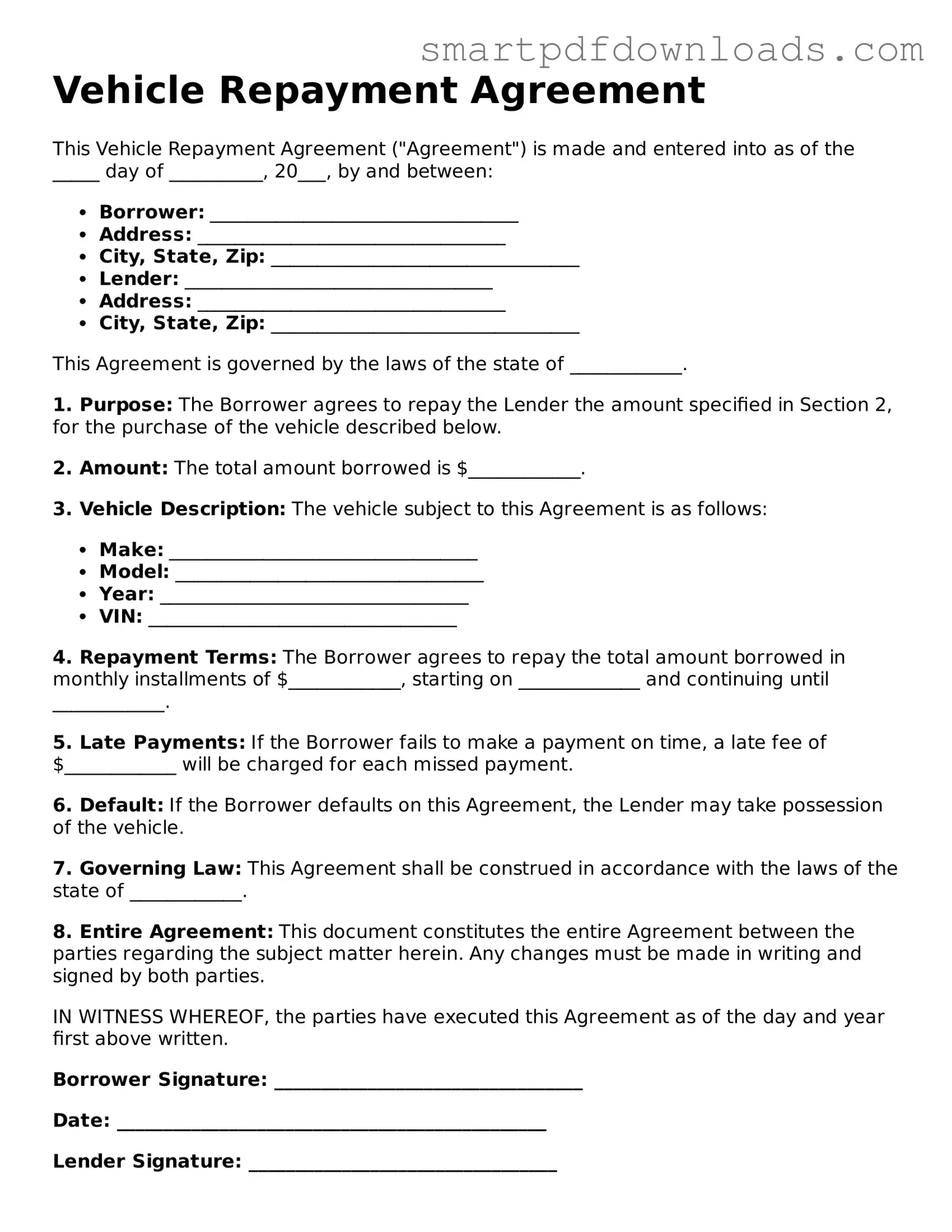Vehicle Repayment Agreement
This Vehicle Repayment Agreement ("Agreement") is made and entered into as of the _____ day of __________, 20___, by and between:
- Borrower: _________________________________
- Address: _________________________________
- City, State, Zip: _________________________________
- Lender: _________________________________
- Address: _________________________________
- City, State, Zip: _________________________________
This Agreement is governed by the laws of the state of ____________.
1. Purpose: The Borrower agrees to repay the Lender the amount specified in Section 2, for the purchase of the vehicle described below.
2. Amount: The total amount borrowed is $____________.
3. Vehicle Description: The vehicle subject to this Agreement is as follows:
- Make: _________________________________
- Model: _________________________________
- Year: _________________________________
- VIN: _________________________________
4. Repayment Terms: The Borrower agrees to repay the total amount borrowed in monthly installments of $____________, starting on _____________ and continuing until ____________.
5. Late Payments: If the Borrower fails to make a payment on time, a late fee of $____________ will be charged for each missed payment.
6. Default: If the Borrower defaults on this Agreement, the Lender may take possession of the vehicle.
7. Governing Law: This Agreement shall be construed in accordance with the laws of the state of ____________.
8. Entire Agreement: This document constitutes the entire Agreement between the parties regarding the subject matter herein. Any changes must be made in writing and signed by both parties.
IN WITNESS WHEREOF, the parties have executed this Agreement as of the day and year first above written.
Borrower Signature: _________________________________
Date: ______________________________________________
Lender Signature: _________________________________
Date: ______________________________________________
